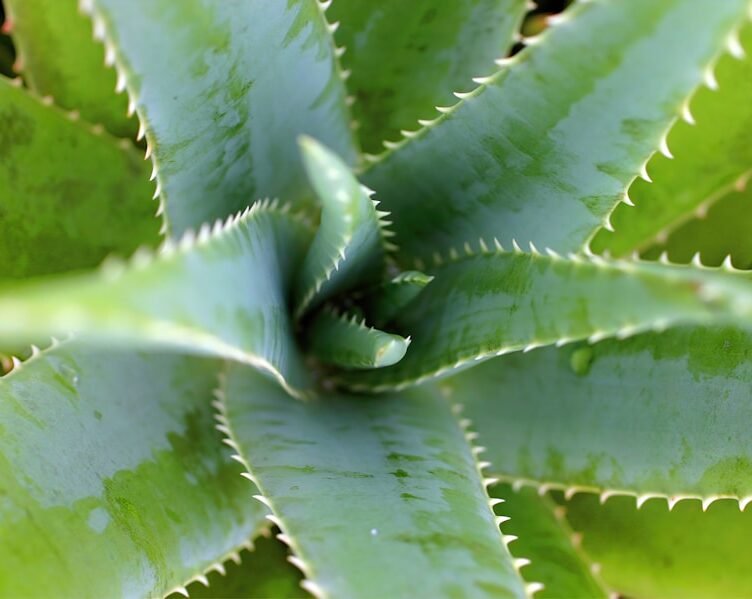Effective management of pests is crucial in indoor garlic gardens, and it begins with understanding the common pests that can infest these plants. Aphids, spider mites, thrips, and whiteflies are among the most prevalent pests that can affect indoor garlic gardens. These pests can cause significant damage to garlic plants by feeding on their leaves, stems, and bulbs, leading to stunted growth and reduced yields.
Aphids are small, soft-bodied insects that can appear green, black, or brown in color. They feed on the sap of garlic plants, causing leaves to curl and turn yellow. Spider mites are tiny arachnids that are often difficult to detect with the naked eye.
They feed on the undersides of garlic leaves, resulting in stippling and webbing on the plant. Thrips are small, slender insects that feed on garlic leaves, causing silvering and distortion of the foliage. Whiteflies are small, white insects that can be found on the undersides of garlic leaves, leading to yellowing and wilting of the plant.
By understanding the characteristics and behaviors of these common pests, gardeners can better prepare themselves to manage them effectively in their indoor garlic gardens.
Key Takeaways
- Understanding common pests in indoor garlic gardens is crucial for effective pest management.
- Preventative measures such as proper sanitation and regular inspection can help control pests in your garlic garden.
- Natural and organic pest management techniques, such as using neem oil or diatomaceous earth, can be effective and safe for indoor garlic gardens.
- Identifying and treating common pests, such as aphids or spider mites, promptly can prevent infestations in your garlic garden.
- Integrated pest management strategies, including using beneficial insects like ladybugs, can help maintain a healthy environment and control pests in your indoor garlic garden.
Preventative Measures for Pest Control in Your Garlic Garden
Start with Healthy Garlic Bulbs
Begin with disease-free garlic bulbs from reputable suppliers to ensure your plants are strong and resilient. Healthy plants are better equipped to resist pest infestations, so it’s essential to source high-quality garlic bulbs.
Maintain a Clean Garden Environment
Pests are attracted to decaying plant matter, so regular removal of dead or dying plants is vital. Keep your garden tidy and clean to discourage pests from inhabiting the area.
Practice Crop Rotation
Crop rotation is a simple yet effective way to disrupt the life cycles of pests and reduce the risk of infestations. Rotate your garlic crops with other plants to prevent pests from building up in the soil. By doing so, you’ll create a healthier environment for your garlic plants to thrive.
Natural and Organic Pest Management Techniques for Indoor Garlic Gardens
When it comes to managing pests in your indoor garlic garden, natural and organic pest management techniques are often the best approach. These techniques are not only effective at controlling pests, but they are also environmentally friendly and safe for use around children and pets. One natural pest management technique is the use of neem oil, which is derived from the seeds of the neem tree.
Neem oil is effective at controlling a wide range of pests, including aphids, spider mites, thrips, and whiteflies. It works by disrupting the feeding and reproductive behaviors of pests, ultimately leading to their demise. Another natural pest management technique is the use of insecticidal soaps, which are made from natural plant oils and fatty acids.
Insecticidal soaps work by suffocating pests on contact, making them an effective option for controlling aphids, spider mites, thrips, and whiteflies in your indoor garlic garden. Additionally, introducing beneficial insects into your garlic garden can help to naturally control pest populations. Ladybugs, lacewings, and predatory mites are all beneficial insects that feed on common pests in indoor garlic gardens, making them a valuable asset in pest management.
Identifying and Treating Common Pests in Indoor Garlic Gardens
| Pest | Damage | Prevention | Treatment |
|---|---|---|---|
| Aphids | Stunted growth, yellowing leaves | Introduce ladybugs, use insecticidal soap | Prune affected areas, use neem oil |
| Spider Mites | Webbing, stippled leaves | Keep humidity high, use predatory mites | Apply insecticidal soap, prune affected areas |
| White Rot | Rotted bulbs, yellowing leaves | Rotate crops, improve drainage | Remove affected plants, use fungicide |
Identifying and treating common pests in your indoor garlic garden is crucial for maintaining healthy plants and maximizing yields. When it comes to identifying pests, it’s important to regularly inspect your garlic plants for signs of infestation. Look for symptoms such as yellowing or wilting leaves, stippling or webbing on the foliage, and distorted or curled leaves.
By identifying these symptoms early on, you can take action to treat the infestation before it becomes severe. When it comes to treating pest infestations in your indoor garlic garden, there are several options available. One option is to use insecticidal sprays that are specifically formulated to target common pests such as aphids, spider mites, thrips, and whiteflies.
These sprays work by directly targeting pests on contact and can be an effective option for controlling infestations. Another treatment option is to use biological control agents such as predatory mites or parasitic wasps, which can help to naturally control pest populations in your garlic garden.
Integrated Pest Management Strategies for Indoor Garlic Gardens
Integrated pest management (IPM) is a holistic approach to pest management that combines multiple strategies to effectively control pests in your indoor garlic garden. This approach focuses on preventing pest infestations through cultural, biological, and mechanical control methods before resorting to chemical treatments. One key component of IPM is monitoring your garlic plants regularly for signs of pest infestations.
By monitoring your plants, you can identify pest problems early on and take action before they become severe. Another component of IPM is using cultural control methods to create an environment that is less favorable for pests. This can include practices such as maintaining proper plant spacing, providing adequate air circulation, and using mulch to suppress weed growth.
Additionally, using mechanical control methods such as hand-picking pests or using barriers like row covers can help to physically prevent pests from infesting your garlic plants. By combining these strategies with natural and organic pest management techniques, you can create a comprehensive IPM plan for managing pests in your indoor garlic garden.
Using Beneficial Insects for Pest Control in Your Garlic Garden
Ladybugs: A Valuable Ally
Ladybugs are one beneficial insect that feeds on aphids, spider mites, thrips, and whiteflies, making them a valuable ally in controlling these common pests in your garlic garden.
Lacewings and Predatory Mites: Effective Options
Additionally, lacewings are another beneficial insect that feeds on aphids and other soft-bodied pests, making them an effective option for natural pest control. Predatory mites are another beneficial insect that can help to control spider mite populations in your indoor garlic garden. These tiny mites feed on spider mites and other small pests, making them an effective option for managing infestations without the need for chemical treatments.
Creating a Balanced Ecosystem
By introducing these beneficial insects into your garlic garden, you can create a balanced ecosystem that naturally controls pest populations while minimizing the need for chemical interventions.
Maintaining a Healthy Environment to Prevent Pests in Your Indoor Garlic Garden
Maintaining a healthy environment is crucial for preventing pest infestations in your indoor garlic garden. Healthy plants are better able to resist pest attacks, so it’s important to provide optimal growing conditions for your garlic plants. This includes providing adequate sunlight, water, and nutrients to support healthy growth and development.
Additionally, it’s important to avoid over-fertilizing your garlic plants, as this can lead to excessive vegetative growth that is more susceptible to pest infestations. Proper plant spacing is also important for maintaining a healthy environment in your indoor garlic garden. Overcrowded plants can create a favorable environment for pests by reducing air circulation and creating areas of high humidity.
By providing adequate spacing between plants, you can help to minimize the risk of pest infestations and promote healthy growth. Additionally, it’s important to remove any weeds or decaying plant material from your garden regularly to reduce potential habitats for pests. By maintaining a healthy environment in your indoor garlic garden, you can minimize the risk of pest infestations and promote thriving plants.
In conclusion, managing pests in your indoor garlic garden requires a comprehensive approach that combines preventative measures, natural and organic pest management techniques, and integrated pest management strategies. By understanding the common pests that can affect your garlic plants and taking proactive steps to prevent infestations, you can create a healthy environment that promotes thriving plants. By incorporating beneficial insects into your garlic garden and maintaining optimal growing conditions, you can effectively manage pests without the need for chemical treatments.
With careful monitoring and regular maintenance, you can enjoy a bountiful harvest of healthy garlic from your indoor garden.
FAQs
What are common pests that can affect indoor garlic gardens?
Common pests that can affect indoor garlic gardens include aphids, spider mites, thrips, and whiteflies. These pests can cause damage to the garlic plants by feeding on the leaves and stems, and can also transmit diseases.
How can I identify pest infestations in my indoor garlic garden?
Pest infestations in indoor garlic gardens can be identified by closely inspecting the plants for signs of damage, such as yellowing or wilting leaves, stippling on the leaves, and the presence of small insects or their eggs on the plant.
What are some natural methods for managing pests in an indoor garlic garden?
Natural methods for managing pests in an indoor garlic garden include using insecticidal soaps, neem oil, and introducing beneficial insects such as ladybugs or lacewings. Additionally, maintaining good air circulation and proper watering can help prevent pest infestations.
Are there any chemical pesticides that can be used in an indoor garlic garden?
While chemical pesticides can be effective in managing pest infestations, it is important to use them with caution in an indoor garlic garden. Always follow the instructions on the pesticide label and consider using organic or low-toxicity options to minimize harm to the environment and beneficial insects.
How can I prevent pest infestations in my indoor garlic garden?
To prevent pest infestations in an indoor garlic garden, it is important to practice good garden hygiene by regularly removing any dead or diseased plant material, and keeping the garden area clean. Additionally, inspecting new plants before bringing them indoors and quarantining them if necessary can help prevent introducing pests to the garden.







